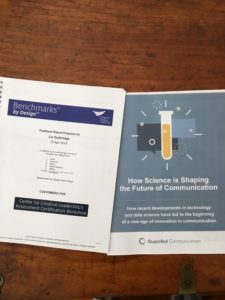 My obsessions with journalism and baseball started in junior high.
My obsessions with journalism and baseball started in junior high.
At the time, I had no clue how these two subjects would prepare me for today’s big data age that’s bringing about deeper understanding, especially for targeted improvements.
Back then, I defied expectations to combine my two passions to become a sports reporter. Instead, I pursued them independently.
On the journalism front, I wrote and edited for school newspapers. In college, I majored in journalism.
As for baseball, my initial paid job was working as the first female vendor at the local Triple A baseball park. Later I served as the official (and unpaid) official scorekeeper and statistician for my high school baseball team.
Once I got traction in journalism and then corporate communications, baseball became a hobby.
Yet the upshot of these two passions is that I’ve always enjoyed looking for stories in the numbers.
Numbers are objective, and more concrete than words. Numbers also often can grab our attention better than words.
But a litany of numbers can be boring, especially for the many brains that prefer words and pictures over numbers. That’s where stories come into play, when you closely examine the numbers to figure out what’s going on and can then craft a story based on the data. A story with numbers can reinforce our current actions or persuade us to change.
For example, I learned from a wise baseball scout years ago to be suspicious of infielders with high fielding averages, especially in the minor leagues. Rather than be a defensive whiz, these players may afraid of making errors. They may not even attempt to field balls unless they’re hit right at them. These players will probably plateau in the bush leagues.
Now fast forward to this spring. I’m playing in the big leagues in two areas with data analytics. It’s fun to dig into the data and find interesting and useful stories.
On the more traditional front, I successfully completed the Center for Creative Leadership’s assessment certification workshop last month. Now I’m the proud owner of my brand-new 360 feedback report. Plus I’m qualified to facilitate and interpret Center for Creative Leadership assessments for others, including executives I’ll soon be coaching.
What’s one of the stories I uncovered? Several people I know – 11 to be exact – were willing to respond quickly when I asked them for a favor, which was affirming for me.
The details showed that over an 11-day period, 78% of the individuals (11 out of 14) I asked to serve as anonymous raters for my assessment complied with my request. Their deadline was tight because I quickly signed up for the training when a new client requested it. The Center advises signing up months ahead of time and giving raters as least four weeks and preferably more. Yet, I had as many or more raters than several of my fellow classmates who had diligently followed instructions.
On the innovative front, I’m now serving as a part-time executive communications coach for Quantified Communications. This specialized firm combines its proprietary data analytics with communication and behavioral science to help executives, MBA students and others improve their communication.
Thanks to new technologies that are revolutionizing communication, Quantified Communications deploys specialized tools to measure videos and audio files. The technical team then assesses the content of the executives’ messages, their delivery and the audience’s perception of them.
In particular, Quantified Communications uses natural language processing to translate human language into the computer’s processing language. The analysis examines clarity, credibility, persuasion, trust, thought leadership, storytelling and other key elements of the words people use.
The firm also uses vocal analysis and facial and gesture analysis. These objective evaluations study a speaker’s delivery including tone and pitch variation for their voice as well as nonverbal communication.
Because of the firm’s extensive comparative benchmarking, individuals also can find out how their communication stacks up to others, including CEOs, speakers of the top 10 TED talks, and academics.
The big data results provide actionable insights for the executives, their communication teams and others. We coaches interpret the measurements, identify the high impact development areas, and create action plans to help improve the individuals’ communications.
What’s one of the stories I’ve uncovered? High-energy, engaging speakers may not be delivering as sticky, substantive messages as assumed.
For example, a likeable and passionate executive wowed our panel of communication experts with his powerful delivery for several talks. However, when looking at his message scores and then further studying what he said, I discovered that his strong delivery was masking a content problem.
While he articulated messages clearly, he wasn’t credible or persuasive. He was tentative in his speech, couching his words with qualifiers and talking in generalities. He was missing opportunities to come across as certain with specific examples of facts and figures.
Thanks to the analytics, the objective data combined with coaching support are able to help him strengthen his messaging.
Numbers are the language of business – as well as sports. Communicating numbers within stories helps you explain important information and persuade people to change their behavior.
To what extent are you using numbers to craft your stories to persuade others?

Thanks so much for this Liz, great to see how you have managed to combine what many believe to be mutually exclusive interests – stats and stories. Thanks too for introducing me to Quantified Communications – what a fascinating concept and business. Cheers
You’re welcome, Karin, and thanks for commenting. Yes, Quantified Communications is a powerful resource for helping leaders and others see how well they’re cutting through the clutter to get people’s attention, being clear and coherent, persuasive, and memorable with their communication. As you well know, based on the applied neuroscience, people need to be able to recall your message in order to act on it.